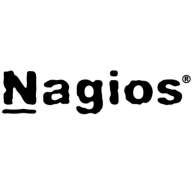

Nagios XI and CA Unified Communications Monitor are competing products in the network monitoring and management category. Nagios XI has an advantage in pricing with favorable initial costs, while CA Unified Communications Monitor surpasses in features, making it a valuable investment for advanced functionality.
Features: Nagios XI includes robust alerting, scalability, and configuration wizards that enhance monitoring processes. It is designed for flexibility and customization, suitable for varied IT environments. CA Unified Communications Monitor offers comprehensive analytics and reporting, real-time network performance monitoring, and in-depth insights for optimizing communication infrastructures, enhancing management capabilities over basic network oversight.
Room for Improvement: Nagios XI could improve in providing more intuitive customization options, advanced dashboard functionalities, and integration features with third-party applications. CA Unified Communications Monitor may enhance its affordability for smaller entities, streamline its user interface, and offer more flexible cost options to better serve a broader range of organizations.
Ease of Deployment and Customer Service: Nagios XI is noted for straightforward deployment with easy installation and setup but might require technical expertise for customization. Its customer service is efficient and responsive. CA Unified Communications Monitor ensures ease of use with a structured deployment process and is supported by proactive customer service teams, facilitating smooth integration and prompt assistance for complex installations.
Pricing and ROI: Nagios XI offers a competitive pricing structure, representing a cost-effective solution with lower setup costs and solid returns through its efficient monitoring features. CA Unified Communications Monitor, while priced higher, promises considerable long-term ROI with its extensive functionalities, enabling businesses to optimize communication channels effectively, often justifying the initial investment with the value it brings to larger enterprises.

CA Unified Communications Monitor is a unified communications monitoring solution that evaluates and reports on the network’s support of real-time applications in multi-vendor environments, so that Network Administrators can optimize the network’s quality of service and end user experience.
Nagios XI provides monitoring of all mission-critical infrastructure components, including applications, services, operating systems, network protocols, systems metrics, and network infrastructure. Third-party add-ons provide tools for monitoring virtually all in-house and external applications, services, and systems.
Nagios XI uses a powerful Core 4 monitoring engine that provides users with the highest levels of server monitoring performance. This high degree of performance enables nearly limitless scalability and monitoring powers.
With Nagios XI, stakeholders can check up on their infrastructure status using the role-based web interface. Sophisticated dashboards enable access to monitoring information and third-party data. Administrators can easily set up permissions so users can only access the infrastructure they are authorized to view.
Nagios XI Benefits and Features
Some of the benefits and top features of using Nagios XI include:
Reviews from Real Users
Nagios XI stands out among its competitors for a number of reasons. Several major ones are its integration options and monitoring abilities, as well as its alerting features.
David P., a senior DevOps engineer at EML Payments Ltd, writes, “We use Nagios as a network discovery tool. We use Nagios to maintain our uptime statistics and to monitor our services. It has allowed us to be much more sophisticated in our monitoring and alerting.”
An IT-OSS manager at a comms service provider notes, “Nagios XI has a custom API feature, and we can expose custom APIs for our integration. This is a great feature.”
We monitor all IT Infrastructure Monitoring reviews to prevent fraudulent reviews and keep review quality high. We do not post reviews by company employees or direct competitors. We validate each review for authenticity via cross-reference with LinkedIn, and personal follow-up with the reviewer when necessary.